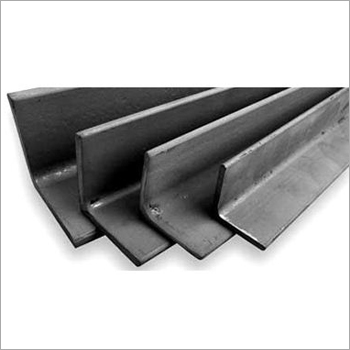Mild Steel Angle
Product Details:
- Material Mild Steel
- Length 20-200 Millimeter (mm)
- Thickness 3- 20 Millimeter (mm)
- Color Grey
- Surface Finish Powder Coating Galvanized
- Click to View more
Mild Steel Angle Product Specifications
- 3- 20 Millimeter (mm)
- Powder Coating Galvanized
- Mild Steel
- 20-200 Millimeter (mm)
- Grey
Mild Steel Angle Trade Information
- 7-10 Days
- All India
Product Description
Mild Steel Angle Features:
8. Cost-Effective: MS angles are cost-effective compared to other structural materials, such as stainless steel or aluminum. This makes them a popular choice for projects that require structural stability at an affordable price.
FAQ of Mild Steel Angle:
Q. What is the difference between mild steel angles and stainless steel angles?
A. MS angles are made from low-carbon steel, while stainless steel angles are made from an alloy that contains a significant amount of chromium. Stainless steel angles offer better corrosion resistance than mild steel angles and are often used in applications where corrosion is a concern. However, stainless steel angles are generally more expensive than mild steel angles.
Q. How do I select the right size of mild steel angle for my project?
A. The size of the mild steel angle you need depends on the specific requirements of your project. Consider factors such as the load-bearing capacity, structural stability, and the dimensions of the structure you're working on. Consulting with a structural engineer or referring to engineering design standards can help you determine the appropriate size and dimensions.
Q. Can mild steel angles be welded?
A. Yes, ms angles can be welded using various welding techniques such as arc welding, MIG welding, or TIG welding. Mild steel is generally considered to be easily weldable, making it convenient for fabrication and joining structural elements.
Q. How can I protect mild steel angles from rust and corrosion?
A. Mild steel is prone to rust and corrosion, but there are several methods to protect it. The most common methods are galvanizing and painting. Galvanizing involves applying a zinc coating to the mild steel angles, which provides excellent corrosion resistance. Painting the angles with a suitable primer and topcoat can also protect them from corrosion.
Q. Where can I purchase mild steel angles?
A. Mild steel angles are commonly available at steel suppliers, metal fabrication shops, and construction material stores. You can also explore online platforms and industrial supply websites to find a wide range of options and sizes.
Q. What are some typical applications of mild steel angles?
A. MS angles have a wide range of applications. They are commonly used in construction for structural supports, framework, and bracing. They are also used in manufacturing and fabrication for making racks, shelves, frames, and various metal structures. Additionally, mild steel angles find applications in industries such as automotive, machinery, and equipment manufacturing.
Q. Are there any limitations to using mild steel angles?
A. MS angles have excellent strength and versatility, but they may not be suitable for applications where high levels of corrosion resistance or extreme temperatures are required. In such cases, alternative materials like stainless steel or specialized alloys may be more appropriate.
 |
JINDAL ROLLING MILLS LTD.
All Rights Reserved.(Terms of Use) Developed and Managed by Infocom Network Private Limited. |


 08045811564
08045811564



